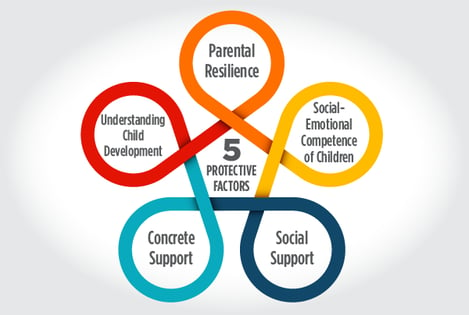Child Abuse Prevention Month
 When you understand that the most common type of child abuse is neglect, you can begin to understand why programs like foster care emphasize reunification, education, and prevention.
When you understand that the most common type of child abuse is neglect, you can begin to understand why programs like foster care emphasize reunification, education, and prevention.
Victor is committed to providing support and programs to educate, intervene, and prevent child abuse by supporting resource families, children and biological parents in hope of reunification. We also offer support to those children who may have experienced trauma because of child abuse.
April is Child Abuse Prevention Month, and during this time, child welfare organizations talk about the ways we can support families and stop abuse before it has a chance to happen. Child abuse prevention programs’ main priority is to empower parents and give them the tools to be good parents and break any generational cycles that may be leading to abuse.
Childcare and abuse were aspects our society highlighted during the pandemic. If neglect is the most common form of child abuse, COVID revealed evidence supporting that claim. What is a parent to do when they need to choose between financially providing for their family and staying home to watch their children? Childcare is a privilege that not everyone has. Often parents are doing their best but fall short.
This is one of the ways community involvement and support are a component of preventing child abuse. By creating nurturing environments in and outside of the home, children can have safe places to go, and their parents have peace knowing they have resources to lean on when life becomes overwhelming. The old saying “it takes a village to raise a child” rings true even today.
Facts and Statistics
Important statistics about child abuse in America.
- The most common type of maltreatment is neglect.
- In Federal fiscal year 2020, about 3.9 million referrals were made to child protective services concerning the safety and well-being of approximately 7.1 million children.
- Last year, an estimated 618,000 children were found to be victims of child abuse or neglect nationwide.
Protective Factors
There are five or six Protective Factors. These are environmental and societal contributions or factors that decrease risk and help families to function as healthy as possible.
1. Nurturing and attachment
An early experience of positive nurturing from a parent greatly impacts a child’s development.
2. Knowledge of parenting and of child and youth development
When parents are able to give affection, respectful communication and listening, and secure boundaries with safe opportunities for independence. The more parents understand these aspects of raising a child, they are more likely to do them intentionally.
3. Parental resilience
Parenting is hard, and life can be difficult sometimes. Therefore, resiliency in a parent is crucial in helping them bounce back and be there for children even when they are feeling down. A parent doesn't have to go it alone and we are here to provide community and support for our resource families.
4. Social connections
Not just for children, but for parents too. When adults have a community of other adults to support them in the raising of a child, they find it easier to parent. As the old saying goes, “It takes a village.” We are a part of many villages!
5. Concrete support
A family's ability to take care of their basic needs and also seek outside resources are better able to ensure safety and well-being for their kids. Especially in times like these, basic necessities like food and power can be a financial burden and uncertain. Be on the lookout for resources through your county and local non-profits and share any info you can.
6. Social and emotional competence of children
It starts early. A positive relationship with their guardian affects all aspects of their behavioral development. This can also be serviced by teachers, resource family guardians, and other important adults in a child's life.
Resource Families and Foster Care
It is no small thing to raise and care for a child. We are so thankful for our resource families for being a positive and safe place where children can reside when they can no longer be with their biological family. While we no longer provide foster services, we remain dedicated to supporting you by connecting you with foster care agencies in your region to access the resources you need.
In addition to our core services, Victor actively collaborates with local programs, workshops, and schools to raise awareness and deliver essential support. By combining immediate assistance with strategies for lasting success, our holistic approach ensures meaningful and sustainable impact.
For more information about our programs and how we can help, visit our website or contact us today.

